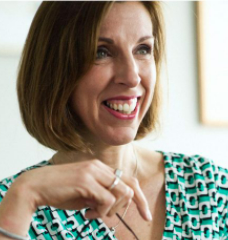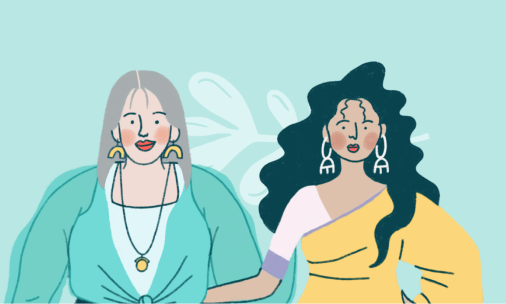Menopause and hair loss Factsheet
Written by Consultant Dermatologist, Dr Sajjad Rajpar
Many women will experience concerns with their hair during or after the menopause. This can come as quite a shock and can be deeply worrying because hair is such an important aspect of self identity.
Hair loss may not be obvious to anyone else at first, and convincing others (including relatives and family doctors) that there is a problem can be a hurdle in itself. The signs may be an increasing loss of hair when brushing or in the shower, general thinning, the hair line moving backwards, and dry or brittle hair. The parting may widen, and more scalp may show through the hair, especially when the hair is wet.
There can be anxiety with brushing or washing the hair, or even looking in the mirror. Stress from hair loss is worsened by not knowing whether the condition will deteriorate and whether HRT will help or not. It can be confusing trying to make sense of the sea of supplements and tonics on the internet or recommended by trichologists and hairdressers.
Who gets hair loss?
Some 40% of women will experience hair loss after the menopause. In two thirds of women this will be all over the scalp. For the remainder, the hair loss is over the front or temples only. Hair loss may start during the perimenopause or occur many years after.
Why does hair loss occur with the menopause?
While a hair follicle is only tiny, it is an extremely complex structure that is still not well understood, especially when it comes to hormonal changes. In helping women with hair loss for 15 years, I have found it easiest to group the triggers for hair loss as follows:
– Ageing and lack of estrogen Studies have shown that the hair is prone to ageing, much like the skin (and every other organ of the body). In women, hair follicles start to shrink from the mid 40’s, and so hair becomes finer with each year. The total number of hair follicles also goes down. This happens over the scalp and on the body; scalp and body hair may decline together. In some women, estrogen is thought to support hair growth and when the menopause occurs there is a faster shrinkage in hair follicles.
– Female pattern hair loss This is a major cause of hair loss with the menopause. A number of hair follicles become ‘miniaturised’, that is the hair follicles shrink so much that they produce a very fine hair that gives no coverage. This is often hereditary but can occur out of the blue too. In some women, the decline in estrogen with the menopause means that there is too much androgen relatively (the hormones responsible for more ‘male’ sex characteristics). This can worsen female pattern hair loss. Consequently, some women who find the hair loss confined to the front and temples have increased facial hair on the chin and upper lip with the menopause.
– Telogen This is when the hair cycle becomes imbalanced and hairs start to shed. This can be because of severe stress, an illness of some kind, calorie restriction, thyroid hormone imbalance and iron deficiency. Sometimes the stress of the menopause on the body itself can be a trigger.
– Medications Certain medications can cause hair to shed such as pain killers, antidepressants and blood pressure treatments. Increasing numbers of women are on hormone treatments, such as tamoxifen and aromatase inhibitors, following breast cancer, which can also cause hair loss. A small number of women notice that synthetic types of HRT can worsen hair loss. Body identical HRT is usually beneficial for hair growth.
– Skin conditions A number of skin conditions can affect the scalp and cause hair loss such as alopecia areata, lupus and scarring alopecia. It is very common for a woman to have multiple factors contributing to their hair loss, as any of the causes listed above can be present in combination with other causes.
What are the best ways of looking after your hair during the perimenopause and menopause?
It is advisable to use a gentle shampoo and a good quality conditioner. Avoid tight hair styles so as to reduce the strain on hair follicles. It is best to avoid intense hair drying as this can damage hair shafts and make them more prone to splitting. Wearing a hat when it is sunny will protect the scalp and hair from UV damage. Colouring hair is usually not a problem and can be continued.
A balanced diet is ideal, and those who can have red meat once a week should. If weight loss is being planned, this should be very gradual and sudden drops in calorie intake should be avoided at all costs. It is also important to ensure that iron levels in the body are adequate, and that there is no thyroid imbalance. Taking hormone replacement therapy (HRT) can slow down or even stop hair loss in some women. It is hard to predict who will benefit. Body identical estrogen and progesterone are preferable.
Managing stress, both in general and that caused by the hair loss, can be very important in dealing with hair loss in the long term.
What treatments are available for hair loss during the perimenopause and menopause?
It is important to establish (as best as possible) the cause of hair loss, as treatment should be directed towards this. Assessment by a doctor specialising in hair loss may involve a clinical review, blood tests and even a hair biopsy for complete evaluation.
Despite the many women who are affected with hair loss, minodixil remains the only medication which is licensed for the treatment of hair loss in women. This medication is only licensed for female pattern hair loss and does not require a prescription.
Minoxidil has been available in the UK since 1988 and can help other hair loss conditions. The decision to start minoxidil is not always straight forward and it can be helpful to discuss the pros and cons with your doctor.
Other medications can also help hair loss. These are not licensed which means they are not easily available and have to be manufactured by specialist pharmacies and used under medical supervision. Medications which can boost hair growth in women and are prescribed in hair tonics include higher strengths of minoxidil, finasteride, oestradiol, progesterone, cyproterone, caffeine and tretinoin. Bespoke combinations are planned for each patient and can help target the predominant cause. Other treatments can also be explored including injections of platelet rich plasma, and in select instances, hair transplantation.
Should I take a supplement to help?
The role of nutritional supplements is still under debate and there is little good quality evidence to identify which supplements might be of most value.




![Hair changes and how to keep it looking good [Video]](https://balance-menopause.com/uploads/2021/10/Mask-Group-18-1.jpg)

![Hair loss, hormones and how to keep it looking good in lockdown [Video]](https://balance-menopause.com/uploads/2021/10/Mask-Group-5-2-800x800.jpg)